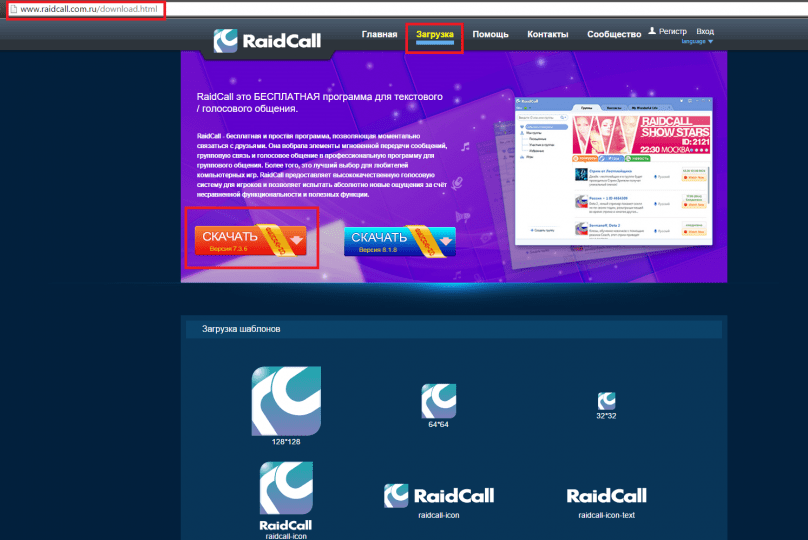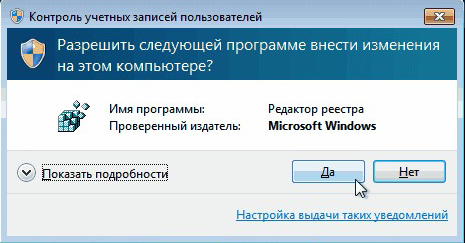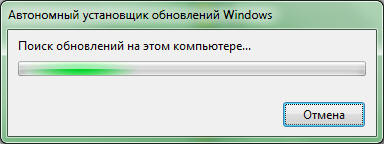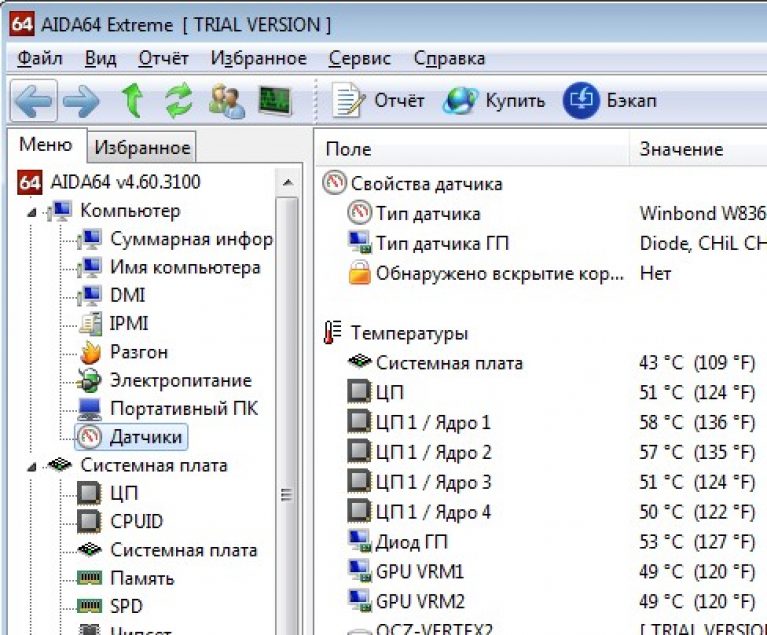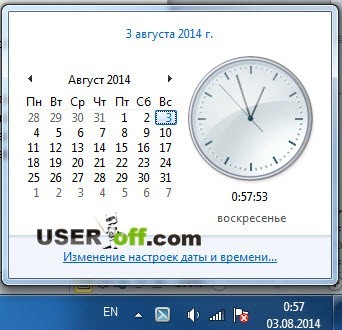The main goal of processing information sources is to establish factors and measure their impact on a particular indicator of the economy, as well as to reveal the causal relationships between various factors and business processes.
The process of processing information sources includes:
· Validation;
· Bringing indicators in a comparable form;
· Simplification of digital data;
· Carrying out analytical calculations;
· Compilation of analytical tables, the formation of conclusions;
· The study of processed materials.
Validation of information is carried out in two stages.
The first is formal-logical control, where the completeness of reporting, the correctness and timeliness of its compilation is checked, the completeness is the coverage of all departments of the facility, the availability of all reporting forms, filling out all sections of the forms, all analytical tables of the program. Correctness is a verification of the correspondence of lines and columns, the names of codes according to a single classifier, the presence of signatures, dates, and inadmissibility of unreasoned corrections.
The second stage is a counting check, which is carried out in several stages. First of all, check the continuity of indicators. The essence of such a check is to verify that the amounts shown, for example, in the report for the previous quarter in the column at the end of the period correspond to the data that are reflected in the report for the reporting period in the column at the beginning of the period. Then check the correctness of arithmetic calculations. If, as a result, a certain amount is indicated in the column “Working capital”, then it should be the sum of inventories, cash and illegal settlements.
After filling out the reporting forms, a knowledgeable accountant controls himself on the basis of a table of interrelations, when they verify the coincidence of the amounts reflected in different reporting forms. So, for example, if a certain amount is given in the form No. I “Balance” on the line “Authorized capital”, then it should also be in the form No. 5 “Appendix to the balance sheet”. Such linkages, when checking the same figure given in different reporting forms, are called simple. There are also complex linkages when the data presented in several reporting forms are used for verification. So, they make up the balance of commercial products, where they use the data of form No. 2, the general ledger, acts of inventory, etc.
To draw up the balance of commercial products using the following formula:
RP \u003d OH + VP - OK + I - N,
Where RP - product sales,
VP - production,
OK - the remains of unsold products at the end of the period,
OH - the remnants of unsold products at the beginning of the period.
And and N - surpluses and shortcomings of products identified during the inventory.
In practice, several methods are used to verify economic information. These include:
1. “Counter” check. This check concretizes the identity of the amounts reflected in the reporting forms of the analyzed object and the amounts actually received on the accounts of the partners in the activity. For example, in the documents of the company it is reflected that it transferred 8 million rubles to the employment fund in March, therefore, the same amount should be reflected in the documents of the employment fund for March or April, depending on the date of transfer.
2. The correctness of the calculation of individual indicators is checked. So, for example, the sale of material assets to the employees of the enterprise at the expense of wages should be previously reflected in the accounts of the sale of products, works and services, or other sales. In other words, these amounts should increase the sales turnover, and, consequently, the taxable base for calculating taxes.
3. When determining the "cost" indicators, the correctness of the allocation to the cost of each item of expenditure is checked. A thorough check should be made on all amounts included in the D 20 account under the general ledger, but settlement accounts 60, 62, 71, 76 are closely monitored.
4. When determining the amounts reflected as material costs, it is controlled:
o the correct attribution of deviations from the planned cost of procurement of materials to cost;
o the legitimacy of writing off to the costs of production shortages in excess of the norms of natural loss and loss.
In the practical implementation of such checks, they are guided by the current instructions and other regulatory acts.
The process of bringing indicators into a comparable form is caused by the fact that indicators are calculated in a different assessment, often differ in structure, construction methodology, are not based on the same bases, the influence of inflation, etc. is great. They bring indicators into a comparable form in several ways. Firstly, you can recalculate the base and actual volumes in one price. Secondly, the actual data can be corrected for the officially registered inflation index published by the statistical authorities. Thirdly, baseline values \u200b\u200bare calculated conventionally calculated on the actual volume and assortment. This technique is used for factor analysis of costs per ruble of products, profits from sales of products, works and services.
Simplification of digital data is rounding, summing, etc. in order to reduce technical work and, in particular, computational activities, as well as to give indicators better visibility and clarity.
However, such a procedure should not lead to “damage” to the quality of analytical calculations. For example, it is advisable to conduct an analysis of the wage fund for the whole enterprise in million rubles, and an analysis of the average wage per employee in thousand rubles. etc.
The stage of carrying out analytical calculations is carried out using all elements of the general methodology of analysis and means of computing and computer technology. Among the elements of the general methodology of analysis should include a system of analytical indicators, an interconnected study of economic processes, battle, detailing, grouping, elimination, generalization. The general methodology of analysis is focused on a general assessment of the dynamics of the studied characteristic, taking into account the influence of positive and negative factors, determining the amounts of identified reserves and developing practical recommendations aimed at improving the results of work.
To formalize the results of the analysis, illustrate the conclusions, analytical tables are compiled. The number of columns in the tables should be optimal using perhaps several databases for comparison (past period, data from another company, etc.). The table should be neatly designed in accordance with standard control. In the upper right corner should be an indication of "Table No." The number can be affixed both as a whole for work and for subsections ”For example, Table 3.1. - The first table in the third subsection.
After one interval, passing 15-17 mm, the name of the table is indicated on the red line. The heading of the table is drawn by a line and numbered, while the columns for numbers are numbered by numbers, and indicators, units of measure and other explanations are written in letters.
The final stage of processing economic information is the stage of studying waste materials. At this stage, it is necessary to disclose all the relationships and interdependencies between individual indicators and factors, and determine the influence, primarily of quantitative, and then qualitative factors.
One of the main destinations of information technology is the collection, processing and provision of information for management decisions. In this regard, it is convenient to consider methods for processing economic information by the phases of the life cycle of the management decision-making process: 1) diagnosis of problems; 2) development (generation) of alternatives; 3) choice of solution; 4) implementation of the solution.
Methods used in the phase diagnosing problems provide its reliable and most complete description. They include (Fig. 2.2) methods of comparison, factor analysis, modeling (economic and mathematical methods, methods of queuing theory, stock theory, economic analysis) and forecasting (qualitative and quantitative methods). All these methods collect, store, process and analyze information, record the most important events. The set of methods depends on the nature and content of the problem, the timing and means that are allocated at the stage of formulation.
Methods development (generation) of alternatives are given in fig. 2.3. Methods of collecting information are also used at this stage, but unlike the first stage, which searches for answers to questions such as “What happened?” And “For what reasons?”, It determines how the problem can be solved, with what management actions .
When developing alternatives (methods of managerial actions to achieve the goal), use methods as an individual,

and collective problem solving. Individual methods are characterized by the least expenditure of time, but these solutions are not always optimal. When generating alternatives, an intuitive approach or methods of logical (rational) problem solving are used. To help the decision maker (DM), experts are invited to solve problems that are involved in the development of alternatives (Fig. 2.4). Collective problem solving is carried out according to the model of brain attack / assault (Fig. 2.5), Delphi and nominal group technique.


In a brain attack, we are dealing with an unlimited discussion, which takes place mainly in groups of 4-10 participants. Brain attack alone is also possible. The greater the difference between the participants, the more fruitful the result (due to different experience, temperament, work spheres).
Participants do not need in-depth and lengthy preparation and experience with this method. However, the quality of the ideas put forward and the time spent will show how individual participants or target groups are familiar with the principles and basic rules of this method. Positive is the presence of participants' knowledge and experience in the field. The duration of a meeting in the framework of a brain attack can be selected in the range from several minutes to several hours, the generally accepted duration is 20-30 minutes.
When using the brainstorming method in small groups, one should strictly adhere to two principles: refrain from evaluating ideas (here quantity becomes quality) and observe four basic rules - criticism is excluded, free association is welcomed, the number of options is desirable, and combinations and improvements are sought.
Decision selection occurs most often in conditions of certainty, risk and uncertainty (Fig. 2.6). The difference between these environmental conditions is determined by the amount of information, the degree of knowledge of the decision maker of the essence of the phenomena, decision-making conditions.

Certainty conditionsrepresent such decision-making conditions (state of knowledge about the essence of phenomena), when a decision maker can determine in advance the result (outcome) of each alternative proposed for choice. This situation is typical for tactical short-term solutions. In this case, the decision maker has detailed information, i.e. comprehensive knowledge of the situation for decision making.
Risk conditionscharacterized by such a state of knowledge about the essence of the phenomenon, when the decision makers are aware of the probabilities of the possible consequences of the implementation of each alternative. The conditions of risk and uncertainty are characterized by the so-called conditions of ambiguous expectations of the future situation in the external environment. In this case, the decision-maker must choose an alternative without having an accurate idea of \u200b\u200benvironmental factors and their influence on the result. Under these conditions, the outcome, the result of each alternative is a function of conditions - environmental factors (utility function), which is not always able to anticipate decision-making. To provide and analyze the results of the selected alternative strategies, a decision matrix is \u200b\u200bused, also called a payment matrix.
Uncertainty conditionsrepresent a state of the environment (knowledge about the nature of phenomena), when each alternative can have several results, and the probability of these outcomes is unknown. The uncertainty of the decision-making environment depends on the relationship between the amount of information and its reliability. The more uncertain the external environment, the more difficult it is to make effective decisions. The decision environment also depends on the degree of dynamics, the mobility of the medium, i.e. the speed of changes in decision making conditions. Changes in conditions can occur as a result of the development of the organization, i.e. the acquisition by her of the ability to solve new problems, the ability to update, and under the influence of factors external to the organization that cannot be regulated by the organization. The choice of the best solution in conditions of uncertainty substantially depends on the degree of this uncertainty, i.e. on what information the decision-maker has. The choice of the best solution in conditions of uncertainty, when the probabilities of possible variants of the conditions are unknown, but there are principles of an approach to assessing the results of actions, provides the use of the following four criteria: Wald's maximin criterion; Savage minimax criterion; Hurwitz criterion of pessimism-optimism; Laplace criterion or Bayesian criterion.
At implementation decisions apply methods of planning, organizing and monitoring the implementation of decisions (Fig. 2.7). Drawing up a plan for implementing the solution involves obtaining an answer to the questions “what, to whom and with whom, how, where and when to do?”. Answers to these questions should be documented. The main methods used in planningmanagement decisions are network modeling and separation of duties (Fig. 2.8). The main tools of network modeling are network matrices (Fig. 2.9), where the network graph is combined with a calendar-scale time grid.

TO organization methodsdecisions include methods for compiling a decision implementation information table (R&D) and methods of influence and motivation.
Control methodsthe implementation of decisions is divided into control over the intermediate and final results and control over the deadlines (operations in engineering and engineering). The main purpose of control is to create a system of guarantees for the implementation of decisions, a system to ensure the highest possible quality of the decision.
The economic information system in its composition resembles a data processing and output information production enterprise. As in any production process, in EIS there is a technology for converting source data into result information. The concept of technology is defined as a system of interconnected methods of processing materials and methods of manufacturing products in the production process.
Information technology (IT) refers to a system of methods and methods for collecting, accumulating, storing, searching and processing information based on the use of computer technology.
An ordered sequence of interrelated actions that are carried out from the moment the information occurs to the result is called a process.
The concept of information technology is thus inseparable from the specific environment in which it is implemented, i.e. from the technical and software environment. It should be noted that information technology is a fairly general concept and how a tool can be used by various users, both lay people in the computer field and developers of new IT.
The functional part of EIS is always associated with the subject area and the concept of information technology. Generally speaking, technology as some kind of precession is present in any subject area. So, for example, the technology for issuing a loan by a bank may have its own characteristics depending on the type of loan, type of collateral, etc. During the implementation of these technological processes, a bank employee processes the relevant information.
The solution of economic and managerial tasks is always closely related to the execution of a number of operations to collect the information necessary to solve these problems, process it according to some algorithms and issue it to the decision maker (DM) in a convenient form. Obviously, decision-making technology always had an informational basis, although data processing was carried out manually. However, with the introduction of computer technology in the management process, the special term information technology has appeared.
In order to terminologically distinguish the traditional technology for solving economic and managerial problems, we introduce the term subject technology, which is a sequence of technological steps for the modification of primary information to the result. For example, accounting technology involves the receipt of primary documentation, which is transformed into an accounting entry form. The latter, changing the state of analytical accounting, leads to a change in the accounts of synthetic accounting and further balance.
IT differs in the type of information being processed (Fig. 2.1), but can be combined into integrated technologies.
Fig. 2.1.
The selection proposed in this figure is somewhat arbitrary, since most of these ITs can support other types of information. So, in word processors, it is possible to perform primitive calculations, table processors can process not only digital but also text information, and also have a built-in graphics generation device. However, each of these technologies is still more focused on processing certain types of information.
Obviously, the modification of the elements that make up the concept of IT, makes it possible to form a huge number of them in various computer environments.
And today we can talk about providing IT (IT) and functional IT (FIT).
Providing IT - information processing technologies that can be used as tools in various subject areas for solving various problems. Supporting information technologies can be classified according to the classes of tasks that they are oriented to. Supporting technologies are based on completely different platforms, which is due to the difference in the types of computers and software environments, so when they are combined based on subject technology, the problem of system integration arises. It consists in the need to bring different IT to a single standard interface.
Functional IT is such a modification of IT support, which implements any of the subject technologies. For example, the work of a bank loan officer using a computer necessarily involves the use of a combination of banking technologies for assessing the creditworthiness of a borrower, the formation of a loan agreement and urgent obligations, calculating a payment schedule and other technologies implemented in any information technology: DBMS, word processor, etc. . The transformation of the supporting information technology in its pure form into a functional one (modification of some commonly used tools to a special one) can be done by both a specialist designer and the user himself. It depends on how complex such a transformation is, i.e. on how accessible it is to the user; to the economist. These opportunities are expanding more and more, since the technologies that provide technology are becoming friendlier from year to year. Thus, in the arsenal of an employee of the credit department there may be both supporting technologies with which he constantly works: text and table processors, and special functional technologies: table processors, DBMS, expert systems that implement subject technologies.
Subject technology and information technology influence each other. For example, the presence of plastic cards as a carrier of financial information fundamentally changes the subject technology, providing features that without this carrier were simply absent. On the other hand, subject technologies, filling them with specific IT content, accentuate them on well-defined functions. Such technologies may be typical or unique, depending on the degree of unification of the technology for performing these functions.
An example is banking technology for working with a file cabinet No. 3, which contains documents received for processing and not completed due to the closure of a personal account based on financial control. In this case, the account is closed first. Then, if information technology is used, this record is marked with a card index number so that the weight of other documents that reduce the balance on the account would fall into this card index. In the structure of the bank’s operations and accounting department, the first and second functions can be performed by both one executor and two different operators. In addition, the processes of performing these functions can be spaced in time. Thus, the note in the personal account made during its temporary closure by one operator is used by another operator in the processing of documents received for payment. At the same time, this mark can be made by the operator who is the responsible executor on this account (opens, closes accounts, provides operations on the account, interest accrual, etc.).
Classification of IT by the type of user interface (Fig.2.2) allows us to talk about the system and application interfaces. And if the latter is associated with the implementation of some functional IT, then the system interface is a set of techniques for interacting with a computer, which is implemented by the operating system or its add-in. Modern operating systems support command, W1MP, and SILK interfaces. Currently, the problem of creating a public interface (socialinterface) has been posed.

Fig. 2.2.
The command interface is the simplest. It provides a system prompt to enter a command. For example, in the MS-DOS operating system, the invitation looks like C:\u003e, and in the UNIX operating system, it is usually a dollar sign.
WlMP-interface stands for Windows (window) Image (image) Menu (menu) Pointer (pointer). A window containing images of programs and an action menu is displayed on the screen. A pointer is used to select one of them.
SlLK-interface stands for -Spich (speech) Image (image) Language (language) Knowledge (knowledge). When using the SILK interface, a speech command moves from one search image to another using semantic semantic ones. connections.
The public interface will include the best solutions for WIMP and SILK intsfsys. It is assumed that when using the public interface, you will not need to understand the menu. On-screen images will definitely indicate the way forward. Moving from one search image to another will take place through semantic semantic links.
Operating systems (OS) are divided into single-program, multi-program and multi-user. Single-program operating systems include, for example, MS-DOS, etc. Multi-program operating systems, such as UNIX (XENIX), Windows, starting with version 3.1, DOS7.0, OS / 2, etc., allow you to run several applications simultaneously. They differ in the time sharing algorithm. If single-program systems operate either in batch mode or in dialogue mode, then multi-program systems can combine these modes. Thus, these systems provide batch and interactive technology.
Multi-user systems are implemented by network operating systems. They provide remote networking technologies, as well as packet and interactive technologies for communication in the workplace. All three types of information technologies are most widely used in economic information systems.
Most of the supporting and functional IT can be used by a manager without additional intermediaries (programmers). In this case, the user can influence the sequence of application of certain technologies. Thus, from the point of view of the participation or non-participation of the user in the process of performing functional IT, all of them can be divided into packaged and interactive.
Economic tasks solved in batch mode are characterized by the following properties:
the algorithm for solving the problem is formalized, the process of solving it does not require human intervention;
there is a large amount of input and output data, a significant part of which is stored on magnetic media;
the calculation is performed for most entries in the input files;
a long time for solving the problem is due to large amounts of data;
regularity, i.e. tasks are solved with a given frequency. Dialogue mode is not an alternative to batch mode, but its development; if the use of batch mode allows you to reduce user intervention in the process of solving the problem, the dialogue mode assumes the absence of a rigidly fixed sequence of data processing operations (if it is not caused by subject technology).
A special place is occupied by network technologies that provide the interaction of many users.
Information technologies differ in the degree of their interaction with each other (Fig. 2.3). They can be implemented by various technical means: floppy disk and network interaction, as well as using various concepts of data processing and storage: distributed information base and distributed data processing.
Fig. 2.3. Classification of IT by the degree of their interaction
Information technology is a systematically organized sequence of operations performed on information using automation tools and techniques. Operations are elementary actions on information. Typical technological operations include the collection and registration of information, its transmission, input, processing, output, storage, accumulation, search, analysis, forecast, decision making. Means and methods of automation include equipment, programs, methods and approaches in organizing information, information systems and technologies, in servicing users.
For the convenience of design and control, technological operations are combined into procedures or stages of processing or transformation, i.e. into more integrated elements of the process. For example, the procedure for collecting and registering primary information includes its delivery, collection, transfer, registration on a machine medium or paper, input into the system, input control.
The information transfer procedure includes, in addition to the transmission of the data input operation to the system, the network, digital to analog conversion and vice versa, message output operations, input and output control, data protection.
Information processing procedures are central to IT. The remaining procedures are auxiliary. They include: operations of inputting information into the system, input, processing, output of results, display of results and their control.
The analysis, forecasting, decision-making procedure is the most complex, intelligent procedure performed by a person on the basis of prepared data, knowledge, their models, rules for working with knowledge and models, and alternative solutions.
Working with databases is the most common and most efficiently implemented in the client-server configuration - a model for the interaction of computers on a network.
The technology for generating documents includes the processes of creating and converting documents.
The technology of image processing in general is based on the analysis, transformation and interpretation of images.
Video technology is based on the development and demonstration of moving images, which has opened up great opportunities in the emergence of a multi-environment.
Visualization technology is the process of multi-window data presentation in the form of images (reverse compression).
Virtual reality technology is used in design, advertising, in the creation of animated films.
Image processing as a direction is associated with the development of electronic equipment and technologies.
Word processing is one of the means of electronic office.
The processing of tables is carried out by a set of application programs as part of the electronic office and is supplemented by a number of analytical capabilities.
Hypertext is formed as a result of representations of the text as associated blocks of information. In cases where a large number of images and sound recording are added to blocks of text, the hypertext turns into a hyper environment.
Speech processing technology is a multifaceted problem, covering a wide range of tasks. Their list, first of all, includes speech recognition and synthesis.
The technology of signal processing and conversion is performed in solving many information problems. Signals are processed by various methods (analog and discrete)
The electronic signature technology is carried out using user identification by comparing a real signature with a signature in the computer system where its electronic template is created.
An electronic office is an information processing technology in an institution by electronic means, based on the processing of data, documents, tables, texts, images, graphs.
E-mail implements the technology of transmitting messages, texts, documents, images using electronic equipment.
The technology of electronic processing of economic information includes a human-machine process for the execution of interrelated operations taking place in the established sequence in order to convert the original (primary) information into the result. The operation is a set of technological processes that are performed, as a result of which information is transformed. Technological operations are diverse in complexity, purpose, implementation technique, performed on various equipment, by many performers. In conditions of electronic data processing, operations are predominant that are performed automatically on machines and devices that read data, perform operations on a given program in automatic mode without human intervention, or while retaining control, analysis and regulation functions for the user.
The construction of the technological process is determined by the following factors: features of the processed economic information, its volume, requirements for urgency and accuracy of processing, types, quantity and characteristics of the applied technical means. They form the basis for the organization of technology, which includes establishing a list, sequence and methods of performing operations, the working order of specialists and automation equipment, organizing jobs, establishing temporary regulations for interaction, etc. The organization of the technological process should ensure its efficiency, comprehensiveness, reliability of operation, high quality of work. This is achieved using a systematic approach to designing technology for solving economic problems. At the same time, there is a comprehensive, interconnected review of all factors, paths, methods of constructing technology, the use of elements of typification and standardization, as well as the unification of technological processes.
Information can be considered as a resource similar to material, labor and monetary resources. Information resources - a set of accumulated information recorded on material carriers in any form, ensuring its transmission in time and space for solving scientific, industrial, managerial and other tasks.
The collection, storage, processing, transmission of information in numerical form is carried out using information technology. The peculiarity of information technologies is that in them both the subject and the product of labor is information, and the tools of labor are computer facilities and communications.
The main goal of information technology is the production of information necessary for the user as a result of targeted actions for its processing.
It is known that information technology is a combination of methods, production and software and technology tools combined into a technological chain that provides for the collection, storage, processing, output and dissemination of information.
The technology of automated processing of economic information is based on the following principles:
Integration of data processing and user experience in the operation of automated systems for centralized storage and data sharing (data banks);
Distributed data processing based on developed transmission systems;
A rational combination of centralized and decentralized management and organization of computing systems;
Modeling and formalized description of data, procedures for their transformation, functions and jobs of performers;
Taking into account the specific features of the object in which machine processing of economic information is implemented.
There are two main types of organization of technological processes: subject and operational.
Subject type organization of technology involves the creation of parallel-operating technological lines specializing in information processing and solving specific problem complexes (labor and wage accounting, supply and marketing, financial transactions, etc.) and organizing operational data processing within the line.
Operational (in-line) type the construction of the technological process provides for the sequential conversion of the processed information, according to the technology presented in the form of a continuous sequence of successive operations performed in automatic mode. This approach to the construction of technology was acceptable in organizing the work of subscriber stations and workstations.
The organization of technology at its individual stages has its own characteristics, which provides the basis for the allocation of extra-machine and machine technology. Extra-machine technology (it is often called pre-base) combines the operations of collecting and recording data, recording data on computer media with control. Machine technology It is associated with the organization of the computing process in computers, the organization of data arrays in the machine’s memory and their structuring, which gives reason to call it also intrabase. Considering that the subsequent chapters of the textbook are devoted to the means that make up the technical base of the extra-machine and intra-machine information conversion, we briefly consider only the features of the construction of these technologies.
The main stage of the technological process is associated with the solution of functional tasks on a computer. The internal machine technology for solving problems on a computer, as a rule, implements the following typical processes for converting economic information: the formation of new arrays of information; streamlining information arrays; selection from the array of some part of the records, merging and separation of arrays; making changes to the array; performing arithmetic operations on details within records, within arrays, over records of several arrays. The solution to each individual task or set of tasks requires the following operations: entering a program for machine solving a problem and placing it in a computer memory, inputting initial data, logical and arithmetic control of entered information, correcting erroneous data, arranging input arrays and sorting the entered information, calculating according to a given algorithm, obtaining output arrays of information, editing output forms, displaying information on a screen and on computer media, printing tables with output data.
The choice of one or another technology option is determined primarily by the space-time features of the tasks to be solved, the frequency, urgency, requirements for the speed of message processing and depends on both the user-mode of interaction with computers dictated by practice and the mode capabilities of hardware - primarily computers.
The following modes of user interaction with a computer are distinguished: batch and interactive (interrogative, interactive). The computers themselves can function in various modes: single and multi-program, time-sharing, real-time, teleprocessing. At the same time, the goal is to meet the needs of users in the maximum possible automation of solving various problems.
Batch mode was most common in the practice of centralized solution of economic problems, when a large proportion of the analysis of the production and economic activities of economic objects of different levels of management.
The organization of the computing process in batch mode was built without user access to the computer. Its functions were limited to preparing the initial data for a complex of information-interconnected tasks and transferring them to the processing center, where a package was formed that included a computer task for processing, programs, initial, normative-pricing and reference data. The package was entered into a computer and implemented automatically without the participation of a user and an operator, which made it possible to minimize the execution time of a given set of tasks. In this case, the operation of the computer could take place in a single-program or multi-program mode, which is preferable, since parallel operation of the main devices of the machine was ensured. Currently, batch mode is implemented in relation to e-mail.
Interactive mode provides for direct user interaction with an information-computer system; it may be in the form of a request (usually regulated) or a dialogue with a computer.
The query mode is necessary for users to interact with the system through a significant number of subscriber terminal devices, including those remote at a considerable distance from the processing center. This need is due to the solution of operational tasks, such as, for example, marketing tasks, personnel reshuffling tasks, strategic tasks, etc. A computer in such cases implements a mass service system, operates in a time-sharing mode, in which several independent subscribers (users) using input-output devices have direct and almost simultaneous access to a computer in the process of solving their tasks. This mode allows differentially in a strictly established order to provide each user time for communication with a computer, and after the end of the session to turn it off.


